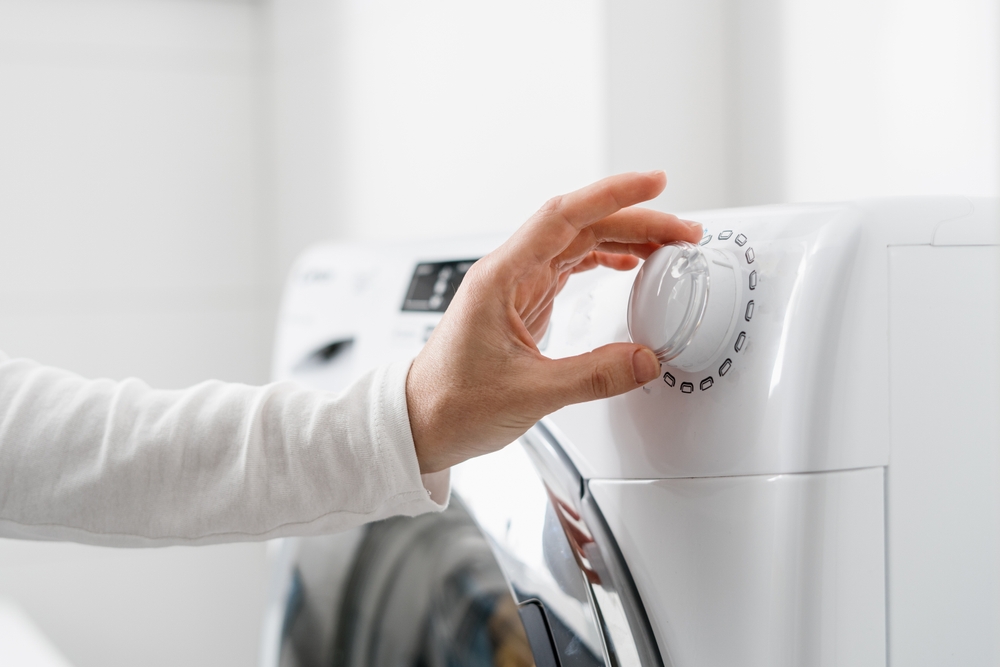Household Bills
Why you may want to avoid the latest laundry hacks to save money

Energy bills and supermarket spends are soaring and while many are turning to hacks to cut the cost of laundry, here are safe ways to save.
Consumer champion Which? has highlighted ways for households to lighten the (laundry) load without reducing the money in your pocket.
Ele Clark, Which? Money expert, said: “Washing clothes is an essential expense, and the annual cost of running a washing machine has now risen to nearly £80. However, Which? has identified a few simple ways to cut laundry costs.
“By making changes such as washing your clothes at off-peak times, ensuring you’re filling your washing machine almost to the top, and opting for a decent detergent, you could shave money off your laundry costs.”
Here are six ways to help you cut back:
1) Ditch pricey detergents without sacrificing cleaning quality
You may think paying more for branded washing powder, capsules or liquids will wash your clothes better.
But a test of 36 different laundry detergents found that the most expensive detergent (40p per wash) compared to a top-rated supermarket own-brand washing powder (8p per wash) cleaned just as well.
Switching to a cheaper detergent could save you around £67 per year, based on four laundry loads a week.
2) Don’t get hack-ed off
The internet can be a great source of information of how you can save money with the latest hack or trick.
And with Brits looking to make their laundry detergent go further, it’s wise to get clued up on exactly how these hacks can affect your skin and wash your clothes.
Using washing-up liquid instead of laundry detergent and adding bicarbonate of soda to your wash should be avoided, as both can irritate the skin, according to the British Skin Foundation.
And according to the Which? lab test, neither did a good job of getting clothes clean either, making almost no impact on stains. Using shower gel instead of laundry detergent also didn’t clean clothes effectively.
A refillable laundry Ecoegg – designed to cut down single-use plastic and cut costs – also failed to remove stains from clothes. Which? said if you use one, be prepared to wash soiled clothing twice.
Ecoegg told us that the produce isn’t designed to remove all stubborn stains in a standard washing machine cycle. Ecoegg said that you can pre-treat stains ahead of machine washing by soaking stained garments with the laundry egg for 10 minutes or overnight.
3) Wash at off-peak times
Check your energy plan as some charge more for electricity used between 5pm and 8pm, when people come home from work and switch on their appliances, so avoiding these times could be a way of saving money.
However, it’s not recommended you leave large appliances such as washing machines, washer-dryers and tumble dryers running when you’re sleeping as they can be fire hazards when left unattended.
4) Fill your washing machine to 80%
The most energy-efficient way of washing clothes is to fill up the drum to about 80% full, rather than washing fewer items on a quick cycle. Quick programs – or speed-up buttons – slightly reduce how much energy is used, but not as effectively as doing bigger normal washes less regularly.
But avoid overloading the washing machine as it could lead to clothes having limited space to move around so there’s less room for the detergent to disperse.
5) Pop capsules at the back of the drum
If using a washing capsule, manufacturers recommend placing them at the back of the drum and then placing the laundry on top. This is to prevent the capsule being swept to the front of the machine, where it could get stuck in the door seal and not dissolve properly.
6) Use a sensible amount of detergent
Increasing the amount of detergent you use won’t make your clothes cleaner. However, too much detergent can leave your clothes stained and covered in a sticky or slimy film because it wasn’t rinsed away properly. It will also cost you more as you get through your detergent more quickly.
The amount you need can vary depending on the size of your machine, so check your washing machine or washer-dryer’s instruction manual or the manufacturer website. Also read the instruction label on your detergent for best use guideline.